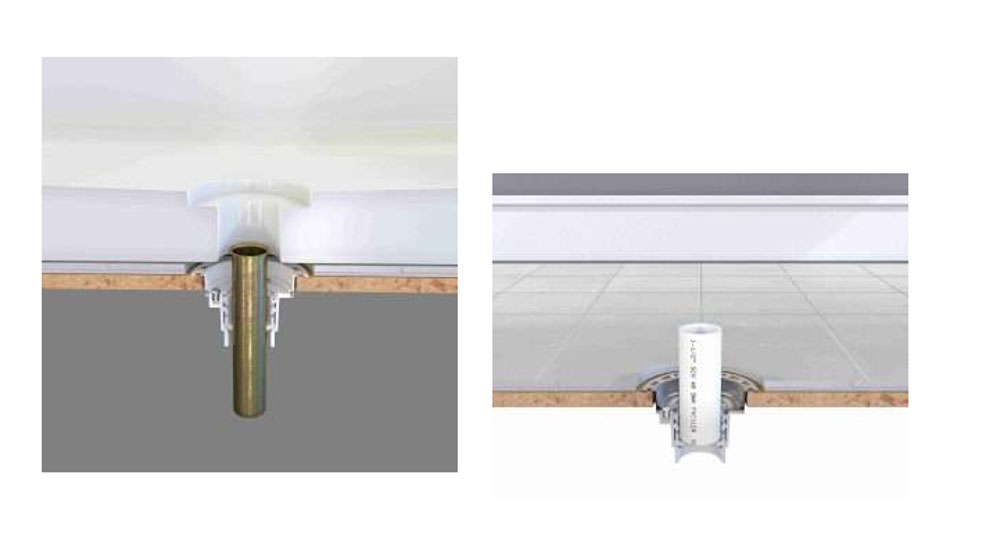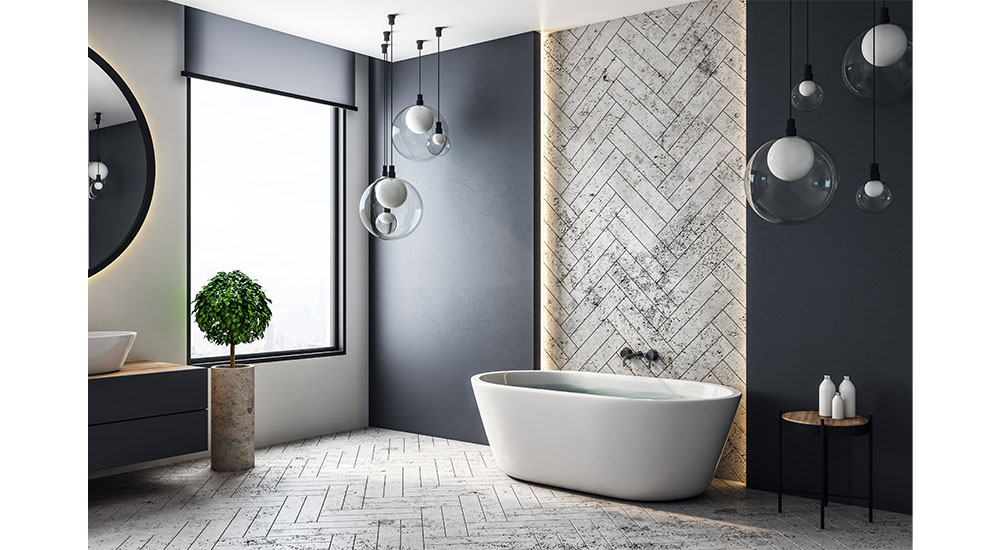Freestanding Bathtubs: Installation & Detailing Tips for Designers
Freestanding bathtubs are still having a moment. Designers love them; homeowners want them; the market is booming. In fact, a 2024 report from 360 Research Reports notes the global freestanding bathtub market reached $3.43 billion in 2023, with a projected rise to $5.58 billion by 2030 – a solid 7.2 % CAGR.
Key drivers? Smart‑home renovations, spa-style bathrooms and elevated aesthetic comfort across residential, hotel and spa sectors.
The Contractor’s Perspective: Common Pain Points
While designers, homeowners and building owners can’t get enough freestanding tubs, most contractors will express how difficult it can be to install one, sharing multiple job-site frustrations that have occurred while installing the drain.
Feedback from contractors usually sounds something like this:
● “Keeping the ceiling open is a pain.”
● “Every tub is kind of different.”
● “My biggest fear is making a solid connection. You’re blind when dropping the tub.”
● “I have to triple- and sometimes quadruple-check with my super and other trades.”
If you’re a bathroom designer, you’ve likely heard these and other similar comments many times before.
These frustrations often stem from the outdated, error‑prone stub‑out method: blind pipe measurements, guesswork, tight quarters and a ceiling‑repair headache if things go off by even an inch.
How to Plumb a Freestanding Bathtub Drain: Old vs. New
The Old Way: Stub-Out & Ceiling Access
Traditionally, when plumbers install a freestanding tub drain using the stub-out method, they are essentially working blind:
● After making a P-trap connection, the contractor leaves the PVC/ABS pipe “stubbed out” a few inches above the floor.
● Once the tile is set, they cut off any extra pipe to guess where the tub will land – measurements that often come down to luck.
● The connection is solvent-cemented from underneath the tub, requiring the contractor to crawl into a confined space and roll out as the tub is lowered.
● Even when measurements look right, being off by just a couple of inches can push the P-trap out of line. If the pipe is too high, the tub sits awkwardly elevated. If it’s too low, the result is a poor connection that isn’t watertight.
In many cases, the installer will not discover the mistake until weeks later – usually after a homeowner calls with a dreaded complaint: “Hey, I’ve got this dark spot in my ceiling…”.
This method introduces multiple frustrations: tight working conditions, solvent cementing in confined spaces and too much guesswork.
To avoid these risks, many installers cut a hole in the ceiling below the bathroom. From this opening, they can make the solvent connection to the P-trap after the tile is set.
While effective, this workaround is hugely disruptive for these reasons:
● It delays the project and adds costs for drywall and paint repairs.
● Matching ceiling textures can be difficult, especially in patterned or high-finish spaces.
● For property owners, it creates an unnecessary mess and inconvenience.
Why It Matters for Designers
For bath designers, both the stub-out and ceiling-access methods create ripple effects, including:
● Unexpected labor costs may squeeze the overall design budget.
● Ceiling repairs can compromise the clean finish you envisioned.
● Design compromises sometimes need to be made just to accommodate the tub.
In short, the old ways of installing a freestanding bathtub are neither contractor- nor designer-friendly.
The New Way: Universal Freestanding Bathtub Drain
A more convenient way to install freestanding tubs does exist. The Oatey® Universal Freestanding Tub Drain was developed to remove the guesswork and complexity that come with older methods, making this growing trend more accessible to designers, contractors and homeowners.
A Clean Connection From Above the Floor
Instead of working blind or cutting from below, the universal drain allows the contractor to drop the tub into place freely. The drain uses a slip joint, so there’s no need for ultra-precise stub-outs or solvent-cementing connections in tight quarters. Installers can make a clean connection from above the floor, even on slab-on-grade jobs.
Inside the drain body, a rubber gasket eliminates the need for solvent cement while still ensuring a watertight seal. This means less crawling under the tub, fewer spotters, and a faster, more confident installation overall.
The graphics below illustrate how the connection is made, whether using a PVC or brass tailpiece.
One Drain For Any Connection
Designers know that every tub – and every job site – has its own challenges. One advantage of this universal drain is its flexibility: Contractors can use the included brass tailpiece or stick with Schedule 40 PVC or ABS pipe. That means fewer supply headaches and greater confidence that the right connection can be made, regardless of the material preference.
This compatibility reduces delays and uncertainty for the designer. One product works in virtually any situation, and the tub can be placed where it belongs without compromise.
Older drains are often bulky, requiring 10-inch joists or more. The compact size of this freestanding tub universal drain allows it to fit between 8-, 10-, and 12-inch joists and inside a standard 4-inch hole saw opening. That makes it especially valuable in remodels and older homes where space is at a premium.
Can You Put a Freestanding Bathtub Against a Wall?
Yes. The flange design is another subtle but significant benefit of this drain design. Unlike full-circle flanges that limit placement, this drain has straight edges. That gives designers more freedom to place a tub against a wall, near a partition, or under a window – meeting customer expectations when even a couple of inches matter.
—Melissa Obradovic, product manager, bath & toilet systems, Oatey Co.









